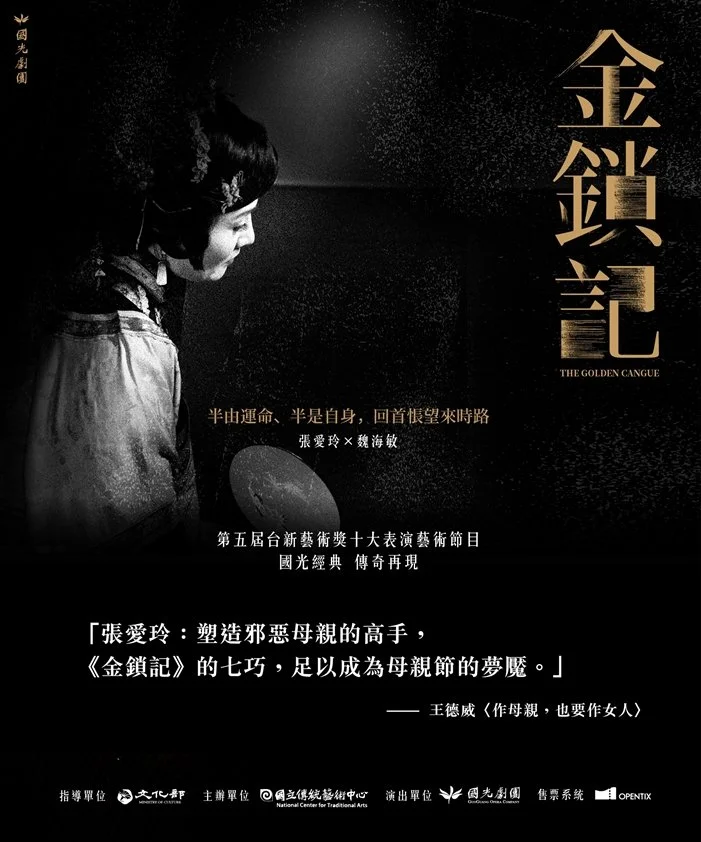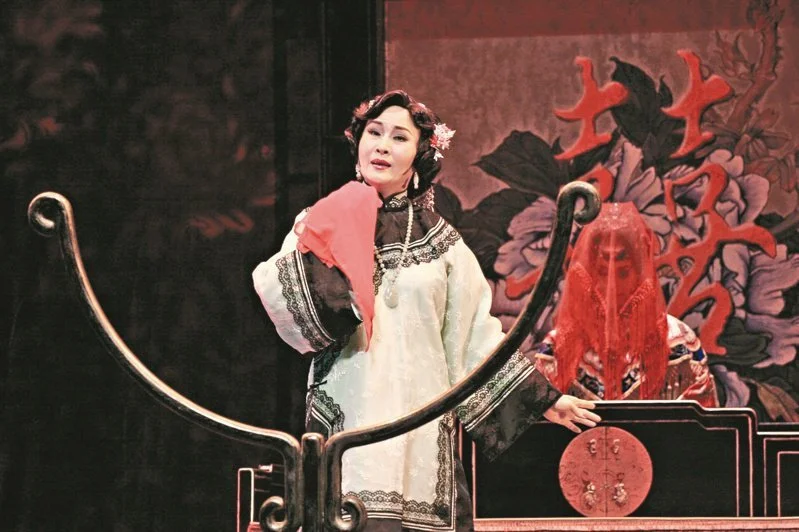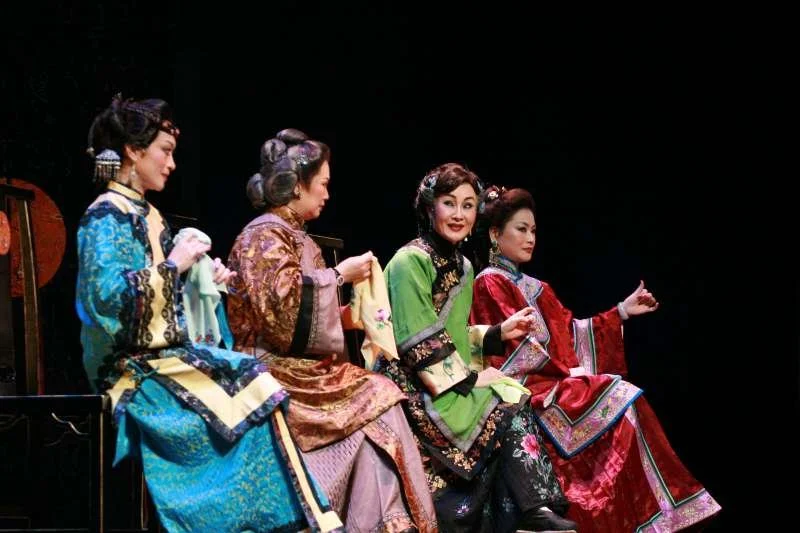The Beautiful Tragedy of Peking Opera “The Golden Cangue”
“The Golden Cangue”, a Chinese short story by Eileen Chang that was published in 1943, is the original story for the English novel The Rouge of the North that was published two decades later.
Considered to be one of the most important literary works of Eileen Chang, “The Golden Cangue” is the story of Cao Qiqiao, a beautiful young bride who marries the son of a rich and noble family, only to find out on her wedding night that her husband is both blind and paralysed.
Cao Qiqiao lamenting her destiny
Courtesy of GuoGuang Opera Company
In 2006, Wang An-chi, Artistic Director of the GuoGuang Opera Company, led the opera troupe to premiere its new Peking opera production based on the story of “The Golden Cangue”, with Wei Hai-Min leading the ‘dan’ role (Cao Qiqiao in this case). Fifteen years after its premiere, The Golden Cangue remains popular and was restaged at the Taiwan Traditional Theatre Centre earlier this month.
The Golden Cangue recounts this story of tragedy through elegant prose and melancholic melody. It all began with a captivating scene in which Cao Qiqiao was seen resting comfortably in a recliner, fantasising how happy her life would be if her family didn’t turn down the marriage proposal from the Liu family (the son of a herb shop owner that Cao had once developed feeling for). It wasn’t long before Cao realised that this was all but a dream — in real life, she’s trapped in an unhappy marriage with her bedridden husband Jiang.
For a long time, Cao feels betrayed by her brother who selfishly married her off to the Jiang family for no other reason than that of its wealth. We would think that Cao finally finds freedom after her bed-ridden husband passed away. Yet, the end of one tragedy only leads to the beginning of another.
Cao Qiqiao plays mahjong with her in-laws
Courtesy of GuoGuang Opera Company
After Cao inherited the wealth of her late husband, she moved out of the Jiang family with her son and daughter. Half a year later, her brother-in-law — with whom Cao had flirted while her husband was still alive — paid her a visit. Cao was disappointed when she found out that he didn’t come for love but her money.
Afraid that the same fate would befall her loving daughter, Cao imposed foot binding on the young girl, believing that it was only when her daughter’s feet turned into ‘crescent moons’ that she would be protected from the many misfortunes that Cao herself underwent.
I was particularly intrigued by a scene in Act II in which Cao was seen playing mahjong ‘in the air’ with the three in-laws. Usually, when playing mahjong, four people would sit around a table facing each other, like how it was already demonstrated in one of the scenes in Act I. But in Act II, we see four women, sitting side by side, moving their hands around to imply the playing of mahjong. Clearly, an abstract approach is used here, further emphasising this play of reality and dream onstage.
Cao Qiqiao smoking opium with her son and daughter
Courtesy of GuoGuang Opera Company
The use of montage is a recurrent technique throughout The Golden Cangue. It not only blurs the line between reality and fantasy, but creates a sense of disorientation in both time and space.
This state of confusion, very much like how memory comes and goes in our mind, encourage the audience to not just sit back and take in whatever that’s presented to them, but weaving their own version of the tale using their imagination.
Cao Qiqiao interfering her daughter’s affair
Courtesy of GuoGuang Opera Company
Towards the end of the story, this writer couldn’t help but contemplate whether the so-called Golden Cangue is Cao’s marriage or the strict rules of society that she’s bound to follow.
Perhaps it’s neither. When we see that the son is married to someone whom Cao has chosen, whereas Cao deliberately ‘missed’ the chance to marry off her daughter who then ends up as a spinster, the answer becomes quite clear. It’s painful to think that Cao herself may have been the culprit who not only imprisons herself but also the life of her beloved children.
As part of the 2022 Taiwan Traditional Theatre Festival, The Golden Cangue was staged at the Taiwan Traditional Theatre Centre in Taipei from April 1-3, 2022.





